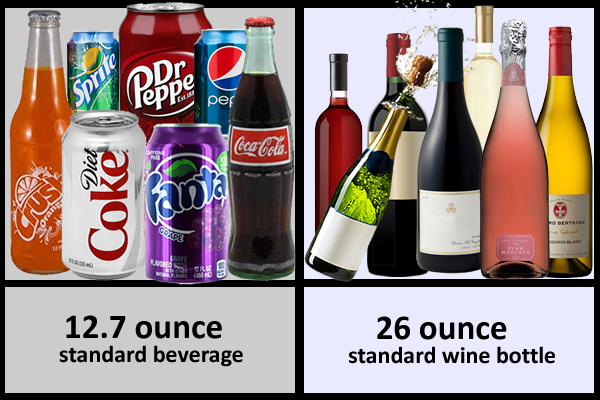|
All of our galvanized buckets are available in single, case pack,
wholesale and pallet quantities.
Call our friendly customer service
in Virginia for information and pricing on wholesale and pallet
quantities.
1-800-251-8824
Monday - Friday 8:30 am to 5:00 pm EST
Some of our galvanized buckets are sold in two styles, "Labeled"
and "No Label". The Labeled buckets will ship with the manufacture's
label on one side of the bucket. The location and size of the label
may vary. The "No Label" buckets have had the label removed by us
prior to shipment. "No Label" buckets are slightly higher in price
to cover our cost of removing the label. To remove a label without leaving any sticky residue use a hairdryer to warm it up and gently remove.
Two size bottles were selected to illustrate bucket size. The smaller
blue bottle (12.7 ounces) demonstrates a regular size beverage. A can of soda or a glass bottle of pop or beer are examples of this standard 12.7 ounce size.
The larger blue bottle (26 ounces) represents a standard wine bottle. The number of beverages each bucket or tub hold are careful estimates to help you select the beverage tub size you need.

Tub beverage capacity is the maximum amount of standing bottles
(flat on the tub's bottom). With peanuts or ice (and placing the
drinks more randomly) you'll have room for more than the number
of "standing bottles," especially in the larger sizes.
Use beverage holding capacities as baseline numbers to make a reasonable choice on what size and how many beverage tubs you will need.
Three types of water-holding ability are available in our tubs and buckets. The use the symbol key provided in the cart below to see the water-holding capacity of large our buckets and tubs.
- Hot-dipped galvanized and electro-galvanized buckets and tubs are made with a durable watertight seal and are corrosion resistant.
- Powder-coat-painted color buckets and tubs generally hold water but additional sealing with clear calk is recommended for a lasting water-tight seal.
- Buckets with an optional plastic liner are not watertight and will corrode over time when exposed to water and corrosive conditions.

(1) Hot-Dip Galvanized Contribution to Zinc Levels in the Water Environment." American Galvanizers Association, 2013, www.galvanize.org/education-and-resources/publications/zinc-in-the-water-environment-white-paper.
(2) L BARHAM, MICHAEL, and DENNIS GILBERT. "Galvanizing and sustainable construction overview." Galvanizers Association . http://galco.ie/wp-content/uploads/2016/09/Galv-and-sustainable-construction-overview.pdf
(3) Hot-Dip Galvanized Contribution to Zinc Levels in the Soil Environment." American Galvanizers Association, 2013, www.galvanize.org/education-and-resources/publications/zinc-in-the-soil-environment-white-paper.
(4) Woolley, Tom. Galvanizing and Sustainable Construction. Galvanizing and Sustainable Construction, European General Galvanizers Association, 2008.
(5)Canadian Council of Ministers of the Environment. 1999. Canadian soil quality guidelines for the protection of environmental and human health: Zinc. In: Canadian environmental
quality guidelines, 1999. Canadian Council of Ministers of the Environment, Winnipeg, Manatoba.
(6)Zinc Coatings (Publication). (2011). Retrieved March 15, 2018, from American Galvanizers Associaion website: https://www.galvanizeit.org/uploads/publications/Zinc_Coatings.pdf
(7) Hot-Dip Galvanizing for Sustainable Design (Publication). (2009). Retrieved March 15, 2018, from American Galvanizers Association website: https://www.daamgalvanizing.com/wp-content/uploads/2015/11/Galvanizing_for_Sustainable_Design2009.pdf
(8) Performance of Hot-Dip Galvanized Steel Products In the Atmosphere, Soil, Water, Concrete, and More (Publication). (2010). Retrieved March 14, 2018, from American Galvanizers Association website: https://www.galvanizeit.org/uploads/publications/Performance_of_Galvanized_Steel_Products.pdf
(9) Tice, E. A. (1962). Effects of Air Pollution on the Atmospheric Corrosion Behavior of Some Metals and Alloys. Journal of the Air Pollution Control Association,12(12), 553-559. doi:10.1080/00022470.1962.10468127
(10) Kusmierek, E., & Chrzescijanska, E. (2015). Atmospheric corrosion of metals in industrial city environment. Data in Brief, 3, 149-154. doi:10.1016/j.dib.2015.02.017
(11) Suzumura, Keita & Nakamura, Shun-ichi. (2004). Environmental Factors Affecting Corrosion of Galvanized Steel Wires. Journal of Materials in Civil Engineering. 16. 1-7. 10.1061/(ASCE)0899-1561(2004)16:1(1).
(12)Toxicological Profile for Zinc (pp. 139-205, Rep.). (2005). Atlanta, GA: Agency for Toxic Substances and Disease Registry. https://www.atsdr.cdc.gov/toxprofiles/tp60.pdf
(13) National Environment Protection Council. 2010. Guideline on Soil Quality Guidelines for Arsenic, Chromium (III), Copper, DDT, Lead, Naphthalene, Nickel & Zinc. Schedule B5c.
National Environment Protection Council, Adelaide, Australia.
|



